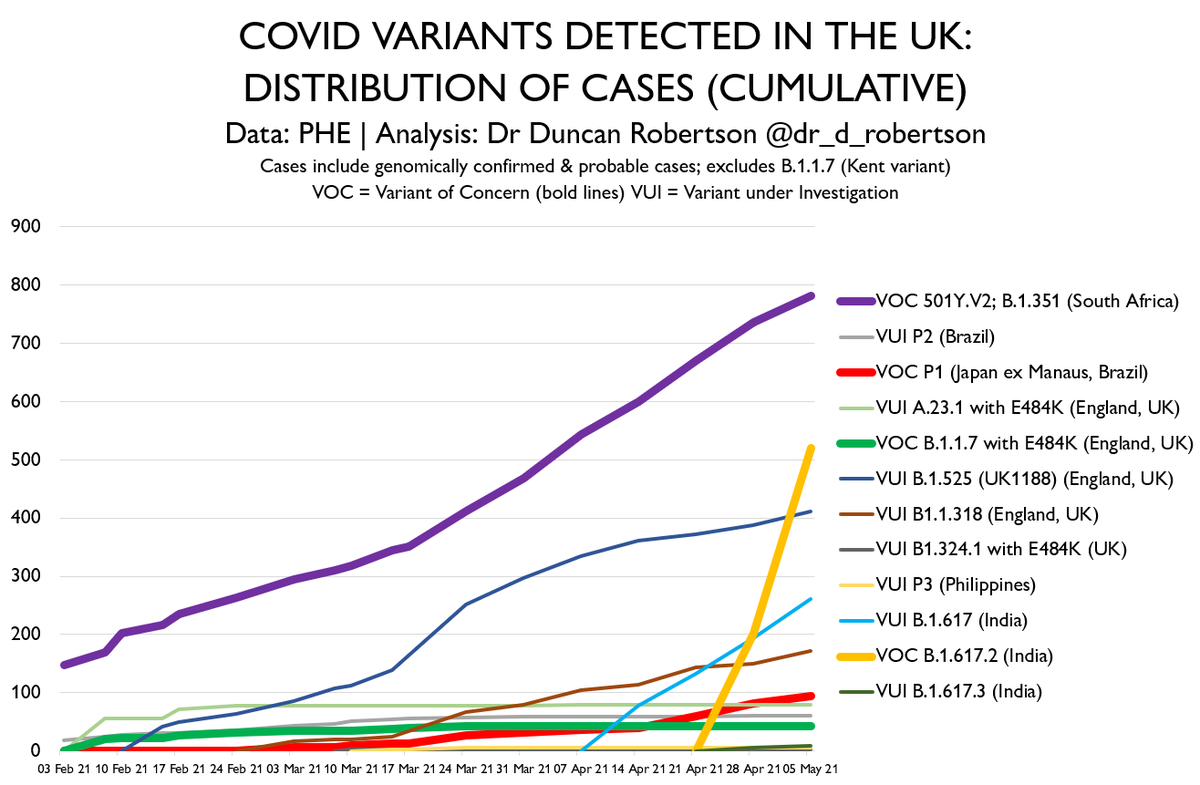
Here are my variants charts for data published on 13 May 2021
**cumulative** chart showing significant increase in B.1.617.2 (orange bold line)
...
**cumulative** chart showing significant increase in B.1.617.2 (orange bold line)
...

Here is the same data on a log chart and including B.1.1.7 (top line)
**cumulative chart**
Significant increase in B.1.617.2 (orange bold line)
**cumulative chart**
Significant increase in B.1.617.2 (orange bold line)

And here is the data on a heatmap. Variants of concern in bold/yellow
Very significant exponential-like growth. Clearly a concern given potential move to Step 3 on Monday.
Very significant exponential-like growth. Clearly a concern given potential move to Step 3 on Monday.

Worth comparing with other variants of concern:
(ps B.1.324.1 with E484K appears to have been removed from VUIs.)
B.1.1.7 up 35% since last week
B.1.351 up 80% since last week
P.1 up 58% since last week (relatively small numbers)
B.1.617.2 up *150%* since last week
(ps B.1.324.1 with E484K appears to have been removed from VUIs.)
B.1.1.7 up 35% since last week
B.1.351 up 80% since last week
P.1 up 58% since last week (relatively small numbers)
B.1.617.2 up *150%* since last week
The risk assessment for the confidence in increased transmissibility of B.1.617.2 has changed from *medium* last week (when the decision was made to move to Step 3) to *high* this week.
https://twitter.com/Dr_D_Robertson/status/1390674652238958594
A Number 10 press conference would tell us whether that has changed the Government's assessment of the *risk* of moving to Step 3 on Monday.
https://twitter.com/Dr_D_Robertson/status/1392932506715017223
• • •
Missing some Tweet in this thread? You can try to
force a refresh













